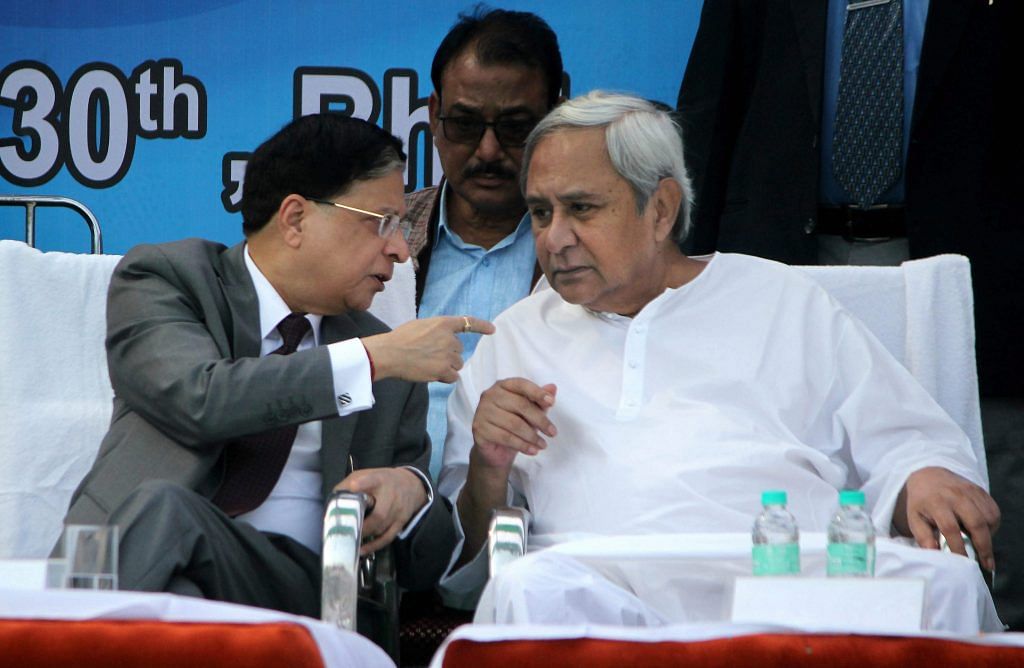Naveen Patnaik’s uninterrupted winning streak is due to his spartan image, TINA factor in Odisha and a combination of economic growth and populist measures.
After the death of Biju Patnaik, when son Naveen launched the Biju Janata Dal, a splinter group of Janata Dal, on 26 December, 1997, Odisha accepted him as “Biju babu’s” son. Nobody expected a political novice like Naveen to emerge as a successful regional satrap though.
It was an amazing transformation of a socialite whose books Jacqueline Kennedy had written a foreword for. He has created a record joining the club of long time chief ministers like Pawan Kumar Chamling (Sikkim) Manik Sarkar (Tripura) and Jyoti Basu (West Bengal) in two decades. Under his leadership, the BJD has performed outstandingly in five Lok Sabha and four assembly elections since 2000. In 2014, it bagged 117 assembly seats out of 147 and 20 Lok Sabha seats out of 21, despite the Modi magic.
No wonder Naveen celebrated the two decades of the BJD at a glittering ceremony in Puri, on 26 December recently. He reminded the voters, “Our motto is service, struggle, good governance and dignity.”
What is the secret of his uninterrupted winning streak? Leader of BJD in Lok Sabha Bhartruhari Mahtab asserts, “His personal lifestyle is spartan. His detachment from material possessions has endeared him to the people as also his personal integrity.” Pinaki Misra, BJD MP from Puri, agrees, “It is because he has managed to convey to the people that he has no family, except the people of Odisha. People believe that ‘this man exists only for us’.”
Secondly, there is no credible leadership in the opposition and this TINA (There Is No Alternative) factor had helped him. After J.B. Patnaik of the Congress faded away, there was no other leader who could challenge him. The BJP too did not develop any strong leader so far.
Thirdly, Naveen has proved his secular credentials when he parted company with the NDA in 2009 after the Kandhamal carnage. It was from here that Patnaik emerged on his own.
He has kept equidistance from both the Congress and the BJP.
Fourthly, and most importantly, Odisha has come a long way from 2000 when he first became the chief minister. If the rural poor like him for the cheap rice scheme and the distribution of bicycles to schoolgirls, the middle classes have equally benefited from the mining boom in the state. More than eight million people have moved up from below poverty line. Construction of one million pucca houses and other such populist schemes gets him the votes.
Defending his populist measures Patnaik himself told an interviewer: “When we came to office in 2000, the state’s finances were in such a terrible state,” pointing out “Now we have an excellent economy, which has a number of anti-poverty programmes running successfully.” Even his critics agree that under him Odisha’s economic progress has been impressive. The state’s GDP grew an average of 6.66 per cent annually in the past five years and per capita income has grown six fold. Focus was also on improving the lives of the 22 per cent tribes, the highest in the country. Even the United Nations praised him for his disaster preparedness for the way he handled the cyclone Phailin of 2013.
Naveen has also dabbled in national politics in 2012, when along with Tamil Nadu chief minister Jayalalithaa, he had projected former Speaker P.A. Sangma as the presidential candidate. He has taken on the Centre on issues. In a signed article on the occasion of BJD’s 20th birthday he said, “Our party is fighting on issues like Mahanadi, Polavaram, minimum support price for farmers, special category status for Odisha and central negligence.”
However, it is not all kudos for Naveen.
From a soft-spoken socialite, Naveen has now emerged as a ruthless and authoritarian leader who refuses to develop second-rung leaders. Over the years, Patnaik has sacked at least 36 ministers. His detractors also point out that in the past two decades, he has driven out almost all the founding members fearing challenge. He threw out Bijoy Mahopatra in 2000, a man who helped him in the initial stages. In 2012, he ousted his political adviser Pyarimohan Mohapatra who tried to engineer a coup. But Pinaki Misra argues, “If you go after his chair he is going to react. They underestimate his strength.” For the past three years, his private secretary V.K. Pandian has become all-powerful. The party does not like this over-reliance on bureaucrats. There have been controversies over the POSCO steel plant and other major natural resource projects.
What about his future? Though Naveen was successful in demolishing the opposition until now, his party is facing a serious challenge from the BJP. The BJP’s growth from just 36 Zilla Parishad seats in 2012 to 297 in February 2017 has alarmed Patnaik. The upcoming urban local body polls are crucial.
The BJP has kicked off its “Mission 120+”, targeting to win over 120 of the 147 assembly seats in 2019. To counter this, the BJD has set an ambitious target of 123 seats, a feat achieved by Biju Patnaik. The million-dollar question is whether Patnaik will win for the fifth time in a row or the BJP will expand further.
Kalyani Shankar is a columnist, the former Political Editor of the Hindustan Times and former Washington correspondent of the Hindustan Times.
